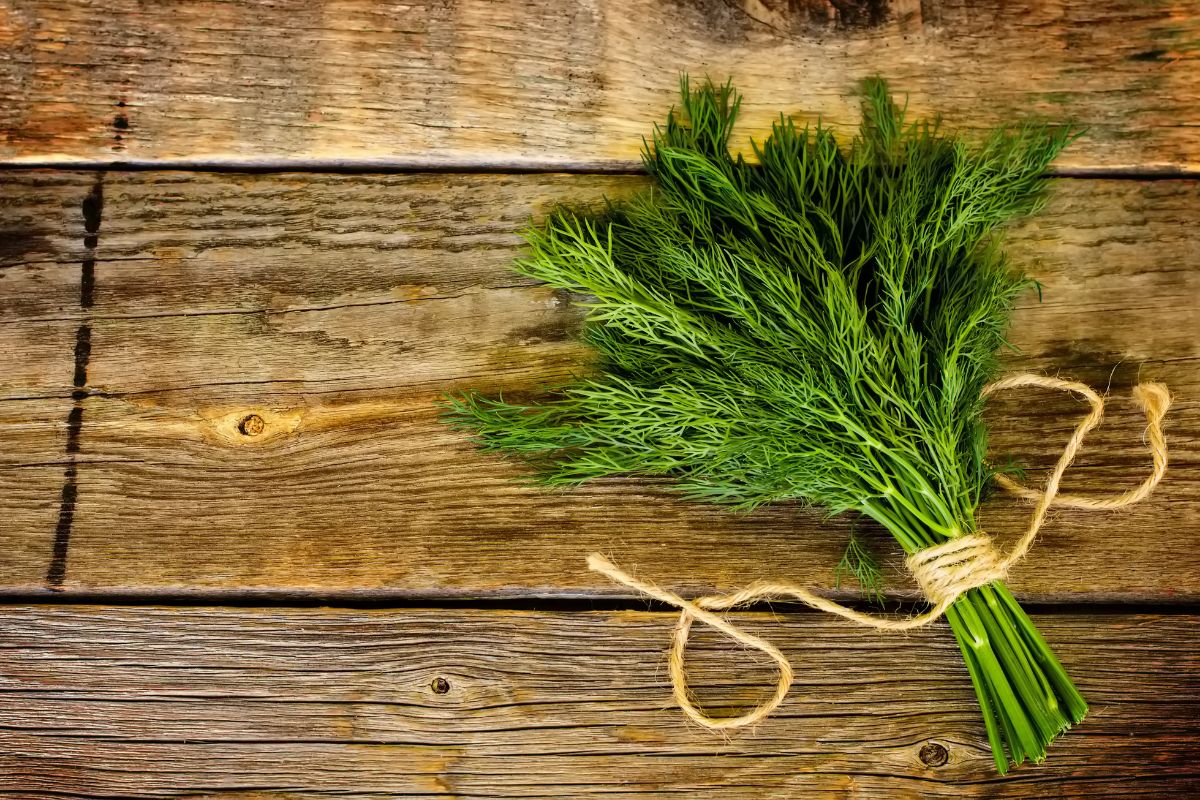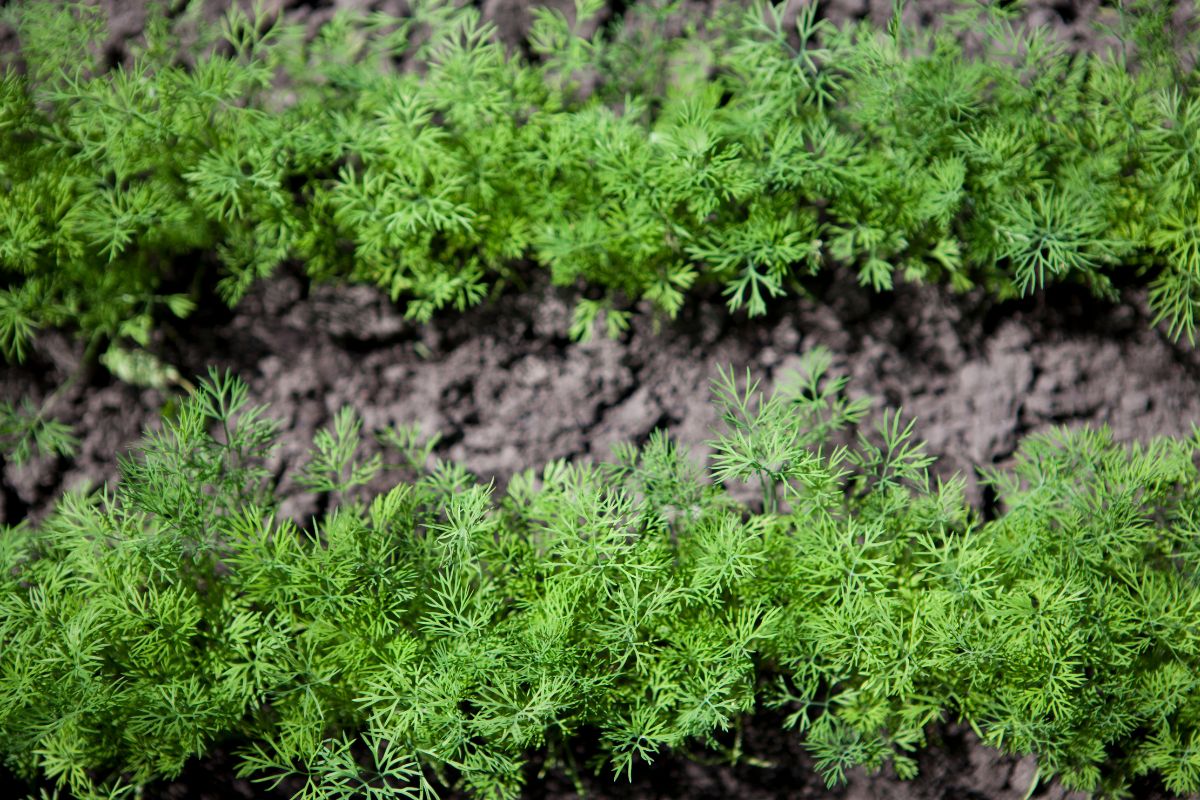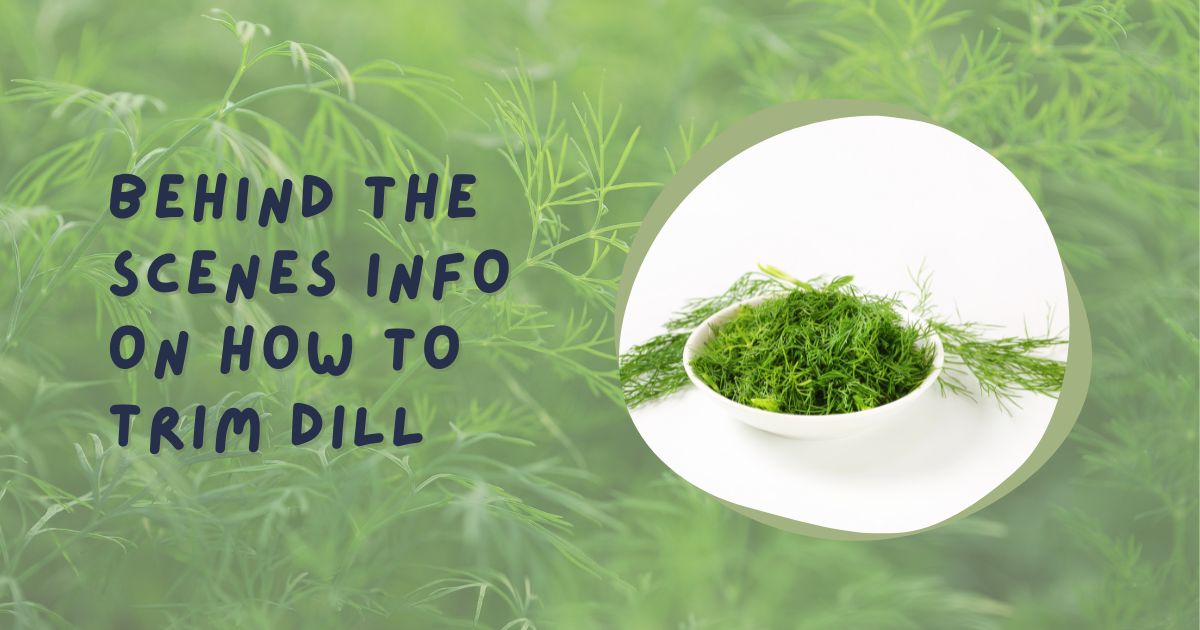Do you Need to Trim Dill?
How amazing it is learning how to trim dill! Dill is crucial in many cuisines, including potato salad, salmon, beans, and steamed vegetables.
Although it’s quite simple to grow dill, sometimes our plans for tall, bushy dill plants don’t pan out. If you know how to prune dill, the plants will yield lots of spices for all your favorite meals, including jars and pickles. It is important to learn how to trim a dill plant.

How to Trim Dill
Method 1
- In this method, you will learn how to cut dill leaves. Remove the leaf tops to encourage bushier growth. To remove leaves, select ones close to the plant’s canopy. You will induce the plant to develop downward as opposed to upward. Outgrowths from the main branch of dill plants feature multiple little stems, each of which has tiny fingers that resemble ferns. To each of these short stalks is a leaf.
- Please take a few tiny branches, and season your food with them. They are pliable enough to remove them. This won’t hurt the plant if you yank it out of the ground.
- Some plants don’t require pruning, depending on the season. Conversely, you can clip and harvest whenever dill grows green. Allow it to mature first, then trim it severely. Normally, it takes eight weeks for a plant to develop from seed to full maturity.
- Leave at least 2/3 of the plant when pruning. When trimming or harvesting, try to remove only one-third of the plant. For the plant to continue receiving the necessary amount of sunshine, it should have a suitable number of leaves.
- To prevent the plant from going to seed, pinch off the blossoms. It’s a good idea to pinch off flowers as they appear throughout the growing season. Thus, the plant continues to grow. It usually dies off if you let the plant go to seed. Where one branch of the flower meets another branch, pinch the stem.
- Just above the joint, snip it. Yellow and small dill blooms gather in rings close to the plant’s apex.
Method 2
- As soon as you can, use your dill. If feasible, utilize your dill right away. During this time, it will have the most flavor. Because of this, it’s better to cut it just before using it in your cuisine. Consider using scissors instead of a knife when chopping dill in the kitchen. It will taste better.
- When preparing dill for storage, remove branches from the primary stem. Look for shoots perpendicularly from the main stem when examining the plant. Cut the shoot with small shears, just 1 inch (2.5 centimeters) or less above the junction. If you intend to store, cutting dill reduces damage to the plant and slows the rate of deterioration.
- You should keep dill in a jar in the refrigerator. You should pour 1 to 2 inches (2.5 to 5.1 centimeters) of water into the bottom of a mason jar. Once you cut off the bottoms of the stems, you should place the dill stem side down in the water. You should put it in the refrigerator with a lid on it.
Method 3
- Water the dill the day before you plan to harvest it. Pick full dill plants only after they begin to bloom. Spray the plant the day before harvest. Avoid water on the plant on the day of harvest.
- Ensure you know how to cut dill without killing the plant. You should cut dill to the ground at the end of the growing season. You can end Dill’s growing season by cutting it off at the base of the stem since it is an annual. You should use pruning shears to cut the plant off.
- Trim the dill in the morning to make sure the plant gets hydration. If you cannot trim the stems in the morning, place them in a glass of water with flowers. Let them swim for two hours.
- Hang the dill to dry. To keep the little bundles of dill together, you should wrap rubber bands around them. Choose a spot that is cozy, dark, and dry. Hang the bunches up to dry. Avoid packing the goods too firmly together. Loose bundles, which prevent mold from growing, encourage airflow. Allow them a few weeks. When the leaves are dry enough to crumble in your palm, you should prepare them. You can store dill in an airtight jar, whole or crushed. Examine the container for moisture after a week. If you see any, remove the dill from the container and spread it to dry.
- You can save the seeds by hanging the plants in a bag upside-down. Before the seeds, keep a watch out for the blossoms. Trim the stalk 4 inches (10 centimeters) below the flower once the seeds sprout. Please do not wait until they start to fall off the plant. After putting the plants in the bag, hang them. The seeds will finally fill the bag.

What Part of the Dill Plant Can You Eat?
You may wonder, what part of the dill plant do you eat? Can you eat dill flowers? The primary portion of the dill plant utilized in cooking is the thin, feathery, green leaves. The tenderest component of the plant, dill leaves, has a strong herbal flavor. Because of this, you can utilize them in dishes without affecting the texture.
The Benefits of Trimming Dill
Pruning dill plants reduces seed production and stop them from becoming too large for their container. Unpruned plants will produce healthy blooms and numerous seeds with each bloom. So, let your dill grow wild if you want to save seeds for future planting or cooking!
Trimming helps keep dill appearing tidy and bushier and encourages lateral growth in the plant. This is the best option if you want a larger harvest of dill to use in pickling, marinades, drying, and other cuisines.
Dill plants can mature at 3 feet (0.9 meters), and since this could make them top-heavy, a gardener will likely need to stake them if the plants don’t already have clips. By keeping it short and compact by pruning, dill can avoid staking.
When Should Dill be Pruned?
You can harvest dill early for a few stems or leaves, but substantial cutting should wait until the plant is fully mature. Eight weeks after sowing the seeds, the plant will have reached maturity and be ready for extensive, severe trimming. Not all plants grow this quickly, but wouldn’t that be nice?
Trim the tops off the longest and surviving stems to make the plant a uniform height and appealing shape. Only take out one-third of the plant while trimming; else, the plant might not live. You should prune before the plant blooms unless you want it to set seed for the following year or if you want to collect the seeds.

Recap
You now have all the information on how to trim a dill plant and how to cut dill from the plant. Dill, a preferred herb in the kitchen, adds a lovely flavor to salads and seafood meals. For dill to remain productive throughout the season, you must keep a healthy plant, which requires knowledge of how to prune dill.
Dill has many culinary applications, and many adore its delicate anise flavor. The soft foamy leaves, a mainstay in central and eastern European cuisine, are a go-to herb for dressing salmon and other fish dishes and have the distinctive flavor of dill pickles.
On the other hand, dill seeds are a common ingredient in Indian cuisine and add to soups and stews. You can also add the lovely yellow blossoms can also be added to salads as a garnish.
